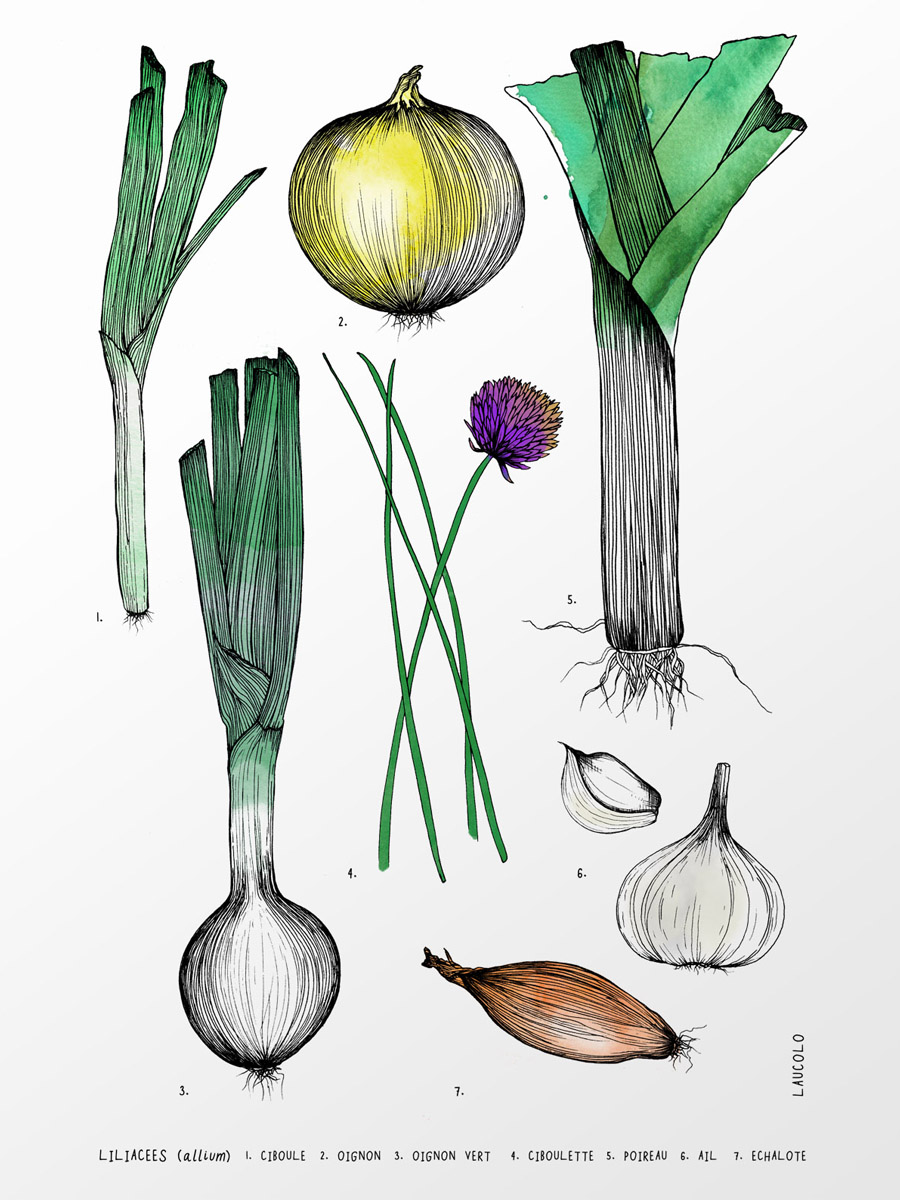Vol. 12 No. 3 (2025): We're All(ium) in this Together

The food pun that makes up the title of this issue (almost) wrote itself.
How can one write otherwise when faced with an illustrated collection of onions, chives, shallots, leeks, and garlic? They are herbaceous and share a distinctive onion-y smell. They are also taxonomically linked.
And yet, when one starts to delve through Laurence Deschamps-Léger’s body of work—whether illustrations on the page or consulting services in sustainable food systems—we begin to see that such linkages are sought, that collectivity in all its forms is actively encouraged.
Deschamps-Léger has referred to this kind of stance and engagement as: “Mêlons-nous de nos onions.” She is playing with the French expression, “Occupe-toi de tes onions,” which, literally translated, means “take care of your own onions,” or “mind your own business,” rather. With a judicious adjustment in pronouns, from you to we, from the singular to the plural, Deschamps-Léger is announcing a shift in responsibility. This business of food production, procurement, preparation, consumption, and deliberation is a shared endeavour.
Figurative alliums—some of them rhizomes—abound in this issue, starting with Sara Edge’s editorial. The Arrell Chair in Food, Policy & Society at the University of Guelph asks food studies scholars, practitioners, and activists to “reach across the table and aisle”—these figurative structures being our disciplinary and epistemological barriers. By reaching across them, we are better equipped to provoke and promote food system transformation.
Our authors—who know their onions—answer the call with five research articles and one review article. Here they rigorously (or as one says in French, aux petits onions), unpack such matters as cultural food insecurity, food loss and waste, food literacies, food retailing, and food justice.
We close the issue as usual with our Choux Questionnaire—this latest iteration with the inimitable Elaine Power. Of what food or food context is she afraid, you ask? Read on, and find out.
Bonne dégustation!



